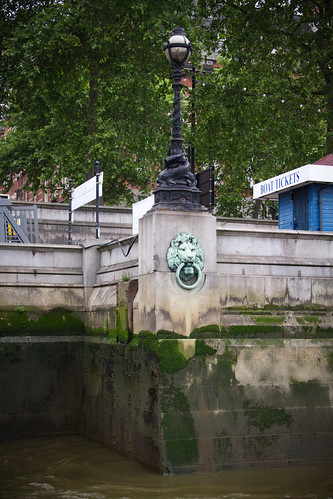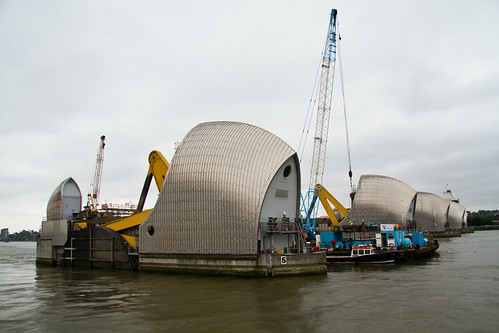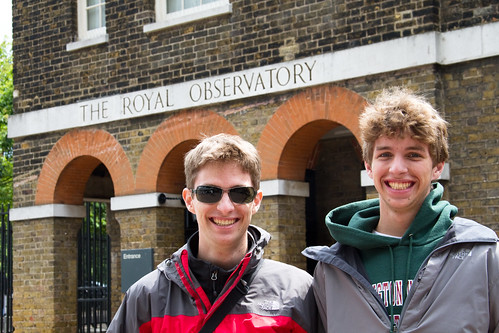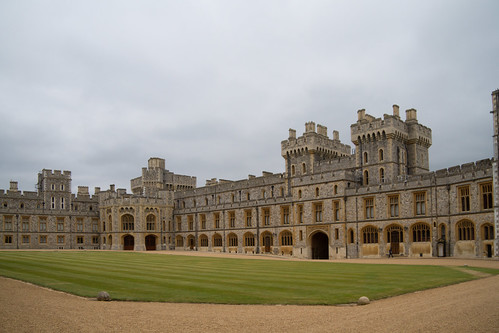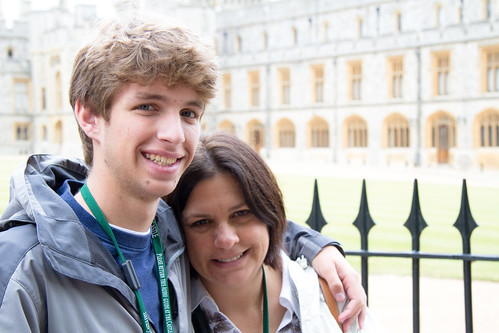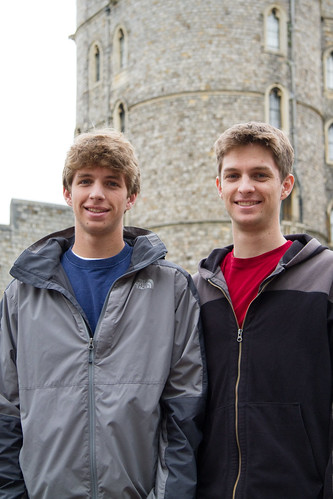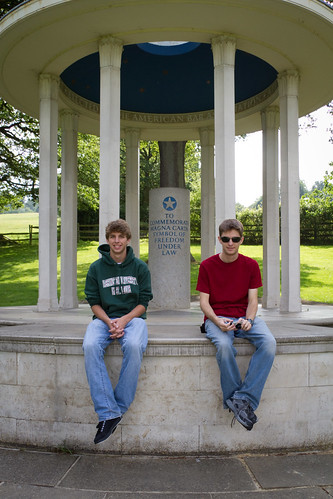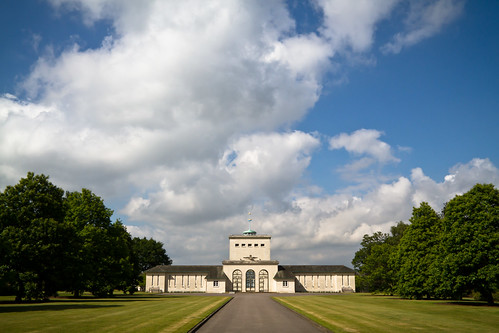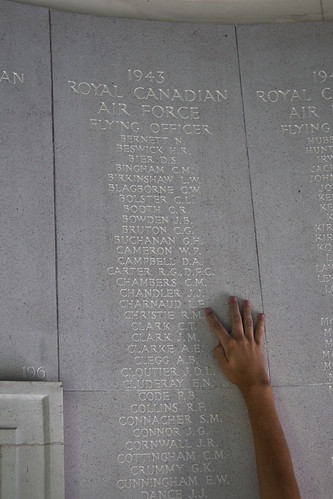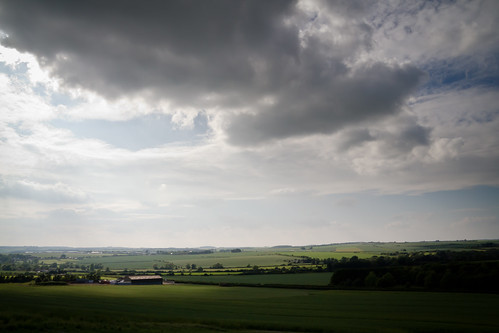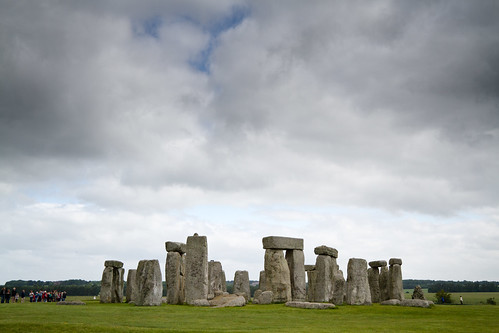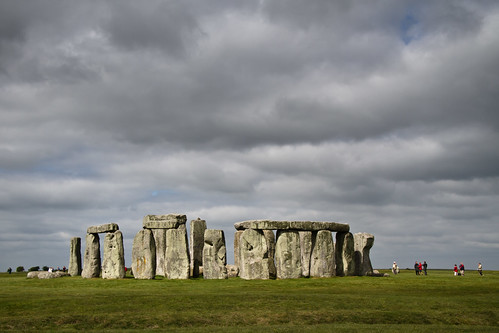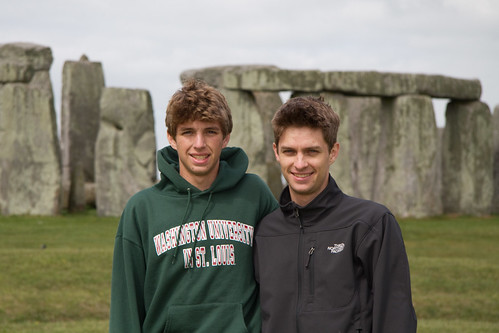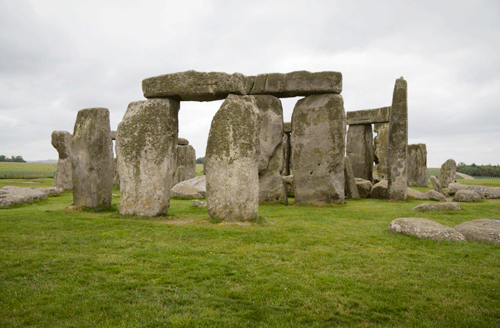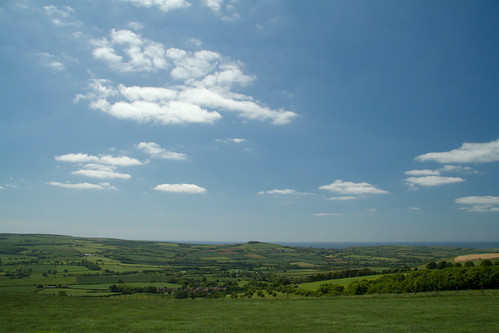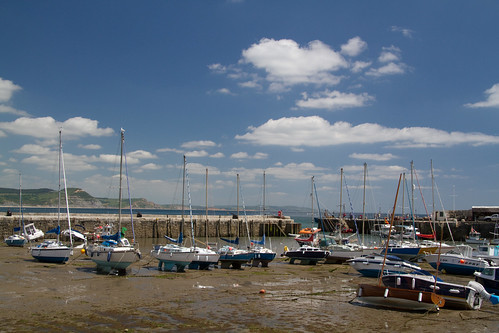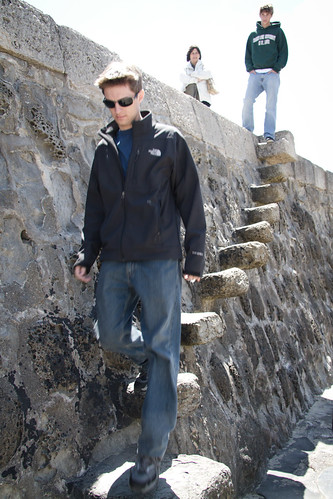Thursday kicked off with a boat tour of the Thames from London to the Thames Barrier with a stop in Greenwich. Though it feels now as if the river banks are primarily high end housing and shopping, the water’s edge in London began as a shipping port for Ancient Rome and kept its Maritime focus of shipping, wharfs and ship building until the last few decades. In fact, the word “wharf” began as WareHouse Along River Front.
London has always been susceptible to flooding by the tides in the English Channel which affect the level of the Thames by up to seven meters. The decorative lion heads along the river walls were places for ships to tie up, but also acted as a water level warning to the citizens, “When the lions drink, London’s in danger.”
To protect the city now, they have built the Thames Barrier – an enormous moveable dam downriver that can be closed during unusually high tides to keep the city from flooding. Since its construction in the 1980s, it has been used over 180 times to protect the city, with annual usage increasing. The Barrier was the farthest point on our boat tour and an impressive sight to see.
Greenwich was our only stop along the tour. We spent a couple hours at the original Royal Observatory: the defining point of the Prime Meridian (0 degrees longitude) and the longtime home of World Time, the standard time to which the rest of the world synchronizes.
The museum and tour explain the King’s original goal of setting up the observatory to collect astronomical data to aid navigation. It explains sextant navigation and the importance of accurate star data to calculate your longitude, and the necessity of an accurate sea-going clock to synchronize your observations with star data created elsewhere on earth. That ‘elsewhere’ was Greenwich, and thus it became defined as the Prime Meridian. The development of an accurate sea-going clock was so important that the government set up a 20,000 Pound prize for anyone who could build one. John Harrison claimed the prize in the 1760s after 40 years of clock development – the museum has versions I through IV (the winning clock) on display, along with many other attempts. We spent quite a while studying the various mechanisms to understand the maker’s design for overcoming the rolling of the ship that would keep a common pendulum from working properly. The museum also houses many of the clocks that for hundreds of years kept the official World Time, until the now-official atomic clock was developed.
Given that Greenwich is a rather geeky stop, and one that I assumed would only be of interest to someone at least familiar with Greenwich Mean Time, I was rather surprised to hear one of our boating companions exclaim as he exited the boat back in London, “I wonder why it feels warmer in London than it did in Green Which?”

Speaking of green witches, after some R&R time we cleaned up and headed to London’s Theater District for dinner and a play. We had a nice Italian meal before going to the Apollo Victoria Theater to see “Wicked.” Sarah had seen the play in SF, and thought the London version was not as funny but musically better.


